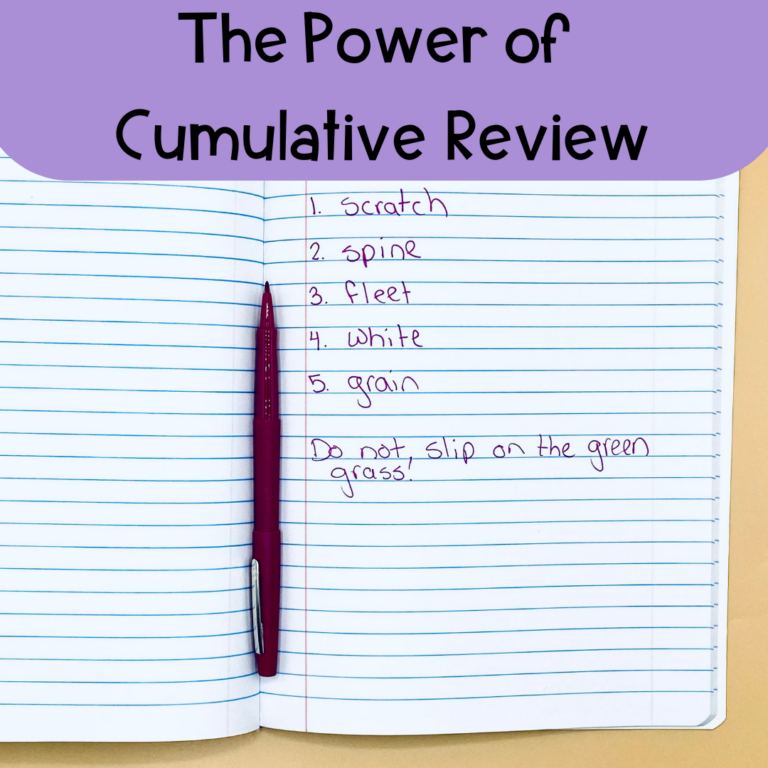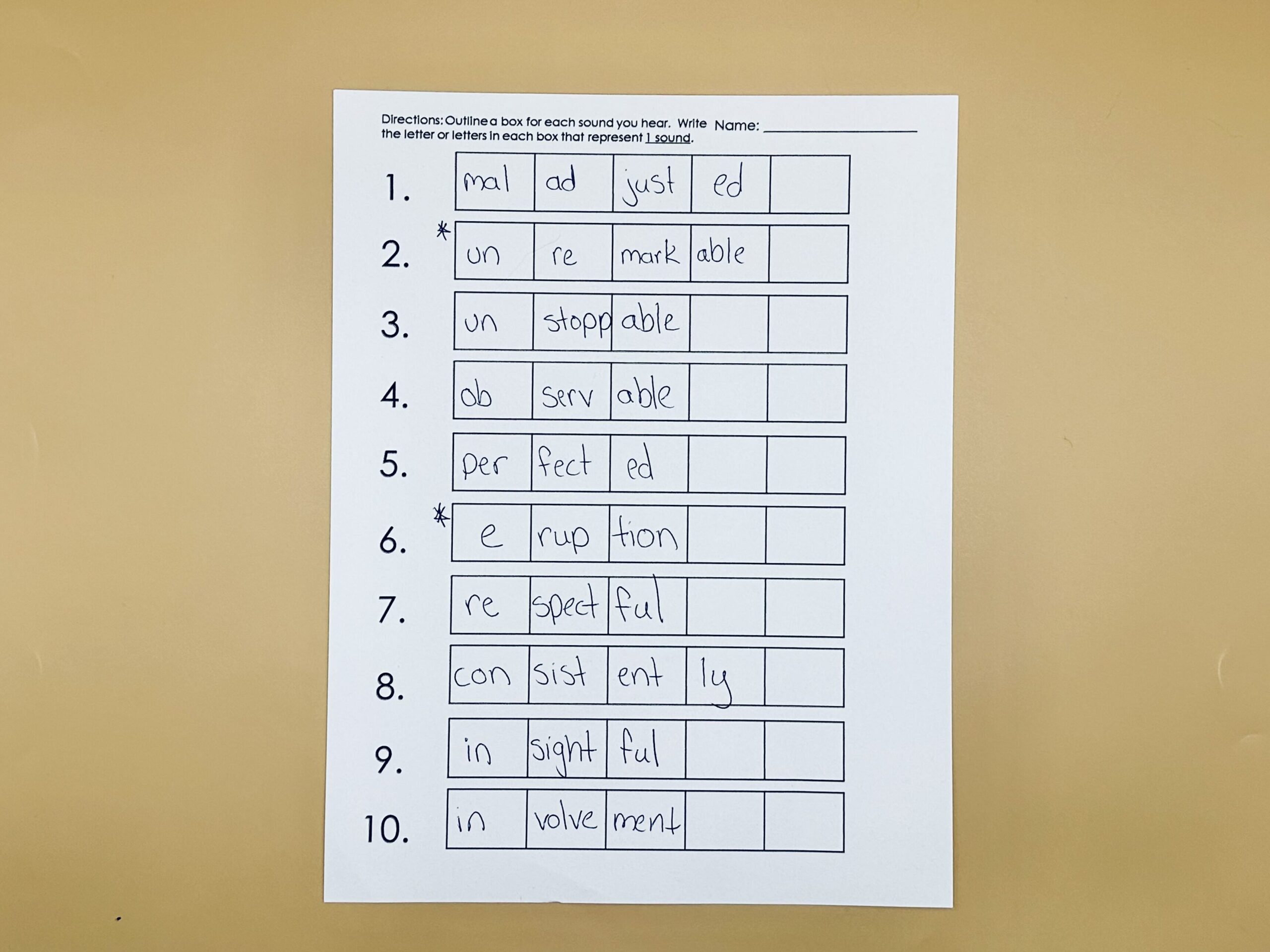
Share This:
Your child’s reading is coming along, but the spelling is still a struggle. Does this sound familiar? How do we help our students improve their spelling? If this rings true for you, do not worry. It is typical for spelling to lag behind reading after first grade.
That being said, it doesn’t mean we can’t improve it. And it doesn’t mean we SHOULDN’T try to improve it. I’ve heard teachers before say “not to worry” about spelling, because they’ll be able to use spellcheck. Or worse yet, “Some people are just bad spellers.”
But spelling is important. Reading and writing are reciprocal processes, and we can and should work to improve both.
In today’s post, I want to give a practical tip for helping with spelling. I’ve shared these tips with parents before, and it is a great, immediate way to see a return on your spelling time.
When students are just beginning to learn how the sounds (phonemes) in words match to the letters (graphemes) that represent those sounds, it can be difficult. Especially when a single sound is represented by multiple letters, like in digraphs (ch, sh, th), vowel teams (ea, ee, ai, ay), and many other graphemes.
In order to continue to draw their attention back to those sound-symbol correspondences, I suggest using sound boxes, or simply drawing lines to represent the sounds.

Why? Spelling is all about the sound-symbol correspondence. If we can identify the number of sounds, all we need to do is help students match the correct symbol (the letter or letters) to represent the sound. It just adds a scaffold for the entire process of spelling.
Teacher: Your word is chart. Say chart.
Students repeat.
Teacher: Let’s tap the sounds in chart.
Teacher and students: /ch/, /ar/, /t/
Teacher. How many sounds do you hear?
Student: 3
Teacher: You will use 3 boxes to spell the word chart. Make sure to say the sounds as you are spelling.
The preceding process was a spelling procedure you can use at any time before a kiddo spell a word. But what can we do when our students have already written and they’ve spell a word incorrectly? Here are a few ways that we can prompt our students when this occurs.
The entire post came about from a conversation I had with a parent in the grocery store. She told me her kiddo’s spelling tests were horrible, and she just didn’t know what to have them do. Writing the words multiple times wasn’t helping. So I taught her the trick below, and it is one that any parent (or teacher) can do to help their students.
When children are spelling words of multisyllabic origin, they often omit sounds, especially vowels. To help with this, we need them to remember that every syllable has a WRITTEN vowel.
Instead of having students use a box or a line for each SOUND, like I did above, this time we are having them uses the boxes/lines to represents SYLLABLES. Instead of tapping each sound, you would tap out each syllable.

Teacher: Say the word recharging.
Students repeat.
Teacher: How many syllables are in the word? Let’s say it together.
Teacher and students: re-charg-ing
Teacher: Draw a line for every syllable you hear. Remember, every syllable must have a vowel. Make sure you say the syllables as you are spelling.
I find that when we remind them that every syllable must have a vowel, we eliminate many of the spelling errors.
These tips do not replace explicit instruction. They are simply tools we can use to help our students in addition to the explicit instruction we are already giving them. Make sure you check out my other posts on morphology and basic phonics instruction.
There’s no easy route towards great spelling. And yes, some kiddos just pick it up a lot faster than others. But all children deserve to live a life where their reading and spelling does not hinder their goals. Using small tips like this, consistently, can leave a huge impact.
Share This:

Savannah Campbell is a K-5 reading specialist. She has taught her entire 12-year teaching career at the school she went to as a child. She holds two master’s degrees in education from the College of William and Mary. Savannah is both Orton-Gillingham and LETRS trained. Her greatest hope in life is to allow all children to live the life they want by helping them to become literate individuals.

Savannah Campbell is a K-5 reading specialist. She has taught her entire 12-year teaching career at the school she went to as a child. She holds two master’s degrees in education from the College of William and Mary. Savannah is both Orton-Gillingham and LETRS trained. Her greatest hope in life is to allow all children to live the life they want by helping them to become literate individuals.
Feeling overwhelmed with all the terminology out there? Want to know the key terms all teachers need to teach phonics? In this FREE Rules of English cheat sheet, you get a 5 page pdf that takes you through the most important terms for understanding English—you’ll learn about digraphs, blends, syllable types, syllable divisions, and move. Grab today and take the stress out of your phonics prep!
